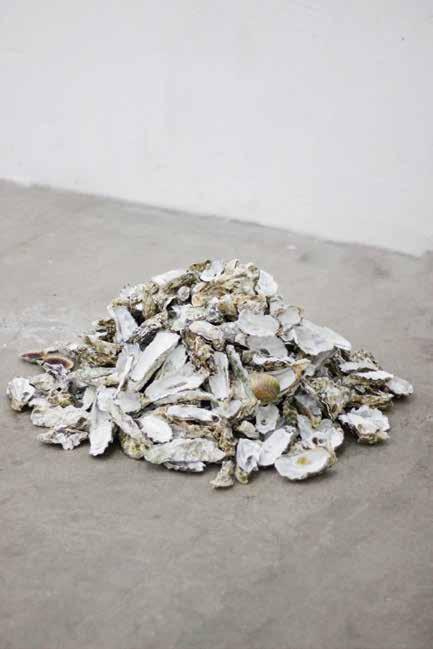MALTA PAVILION
Wins 2025 medal at London Design Biennale
EXHIBITION R GALLERY
Seven unresolved murder cases in Malta
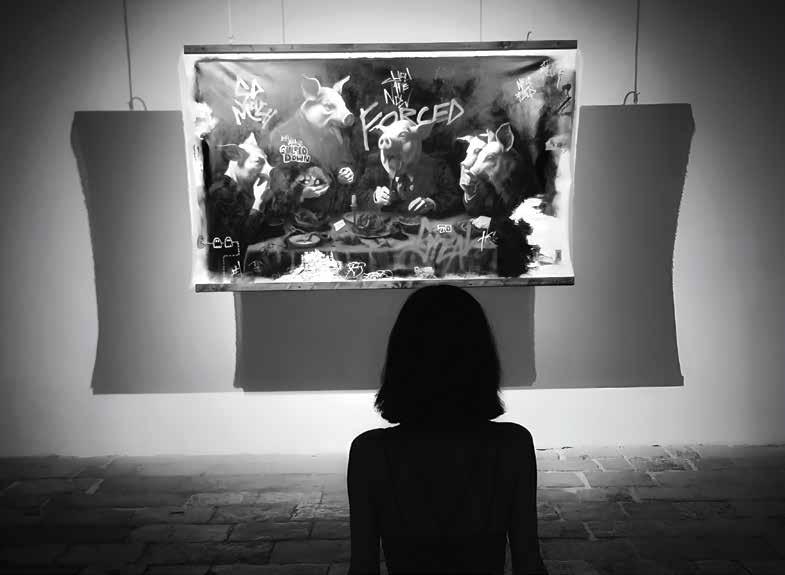

MALTA PAVILION
Wins 2025 medal at London Design Biennale
EXHIBITION R GALLERY
Seven unresolved murder cases in Malta

Exploring the galleries of Spazju Kreattiv and soaking in CO-MA’s work has a strange effect. The artist successfully makes the viewer ponder our personal attributions to each of the seven sins; how would we represent our topic of scrutiny? What visuals, what qualities do we associate with each, and how would they become manifest in tangible form? This element alone, inducing a highly unexpected outcome, of a most personal if not intimate nature.
>> Read the review by Lisa Gwen of the exhibition Every Saint has a Past & Every Sinner Has a Future by CO-MA at Spazju Kreattiv, on page 18.

VENICE
Biennale 2025 with over 750 participants

“… the act of acquiring art is part of the art piece’s own story.” -
MARIA MUSCAT
A Conversation with Joanna Delia
Contemporary art collector and local patron Dr. Joanna Delia lives passionately. We sit across from each other in her home cum gallery - or is it the other way round? - to chat about her world and her art. We are literally surrounded by it, sitting on it. No podiums, no screens, art is within arm’s reach in every room. It becomes apparent very quickly that there is a bigger love pushing Joanna’s drive to collect - a love for the story behind things. >> Page 23.



July - October 2025

Perfectly exemplifying and merging design innovation and creativity, together with a more deeply spiritual enquiry, ‘URNA’ is an innovative project speculating on a radical future for the adoption of cremation in Malta.
PAGE 08
Malta Pavilion ‘URNA’ wins 2025 London Design Biennale medal

Tabling Emotion is a popup, activist art installation and exhibition designed to shed light on seven cases in Malta
PAGE 13
By the Public Interest Litigation Network & The Daphne Caruana Galizia Foundation

Malta has been home to a thriving arts and culture scene for many decades, with its modern development gaining momentum after independence in 1964.
PAGE 15
MICAS launches new exhibition featuring six Maltese artists
Contact info@artpaper.press
Website www.artpaper.press
Instagram artpaper.press
Facebook artpaper.press
Editor Lily Agius
Graphic Design
Nicholas Cutajar
Writers + Contributors
Joanna Delia
Erica Giusta
Lisa Gwen
MEIA
Kat Maj
Maria Muscat
Featured Artists
Adrian Abela
Caesar Attard
Matthew Attard
John Paul Azzopardi
Rebecca Bonaci
Vince Briffa
Anna Calleja
Austin Camilleri
Joyce Camilleri
CO-MA
Celine Cuvelier
Joanna Demarco
Javier Joseph Formosa
Axel Fourmont
SJ Fuerst
Stephanie Galea
Anton Grech
Bettina Hutschek
Gulja Holland
Sonia Lenzi
Pierre Portelli
Margerita Pulè
Stéphanie Roland
Sahhara
Matthew Schembri
Teresa Sciberras
Marlon Tabone
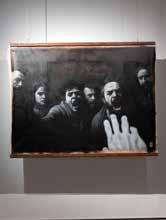

In a world steadfastly losing its sense of colour and nuance, CO-MA seems to have found it.
Review of Every Saint Has A Past & Every Sinner Has A Future
No podiums, no screens, art is within arm’s reach in every room. It becomes apparent very quickly that there is a bigger love pushing Joanna’s drive to collect...
Interview with art collector Dr Joanna Delia

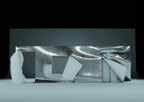
A wearying trade fair celebrating techno-optimism, counterbalanced by a few sensitive national participations.
PAGE 28
Review of the Venice Architecture Biennale 2025
Sebastian Tanti Burlo URNA
Julien Vinet
Raffaella Zammit
Galleries & Organisations
2B Gallery
Christine X Art Gallery
Crea Venice
Lily Agius Gallery
London Design Biennale
Malta Society of Arts
MICAS
Spazju Kreattiv
The Victor Pasmore
Gallery
Venice Architecture & Design Biennale
Supported by
AX Roselli Hotel
2B Gallery
AP Valletta
Boca Bistro
Chemimart
Edwards Lowell
iLab Photo
Isle of Décor
Light Design Solutions
Maltabiennale.art
MICAS
MUZA
Myoka
Niche Workspace No.43
People & Skin


R Gallery
Risette
Society of Arts
Soho Workspace
Sunlab
Ta’ Lonza
Teatru Manoel
The Malta Society of Arts
The Phoenicia Hotel
The Victor Pasmore
Gallery
Valletta Contemporary
VeeGeeBee Art Supplies
Zfin Malta





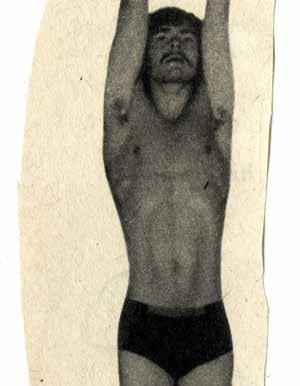
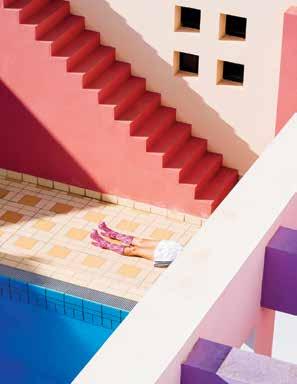


July - October 2025

Arts Council Malta are delighted to announce ‘URNA’, by a collaborative creative team including Andrew Borg Wirth, Anthony Bonnici, Matthew Attard Navarro, Thomas Mifsud, Anne Immelé, Stephanie Sant and Tanil Raif has won the 2025 London Design Biennale Medal, awarded to the most outstanding overall contribution.
Perfectly exemplifying and merging design innovation and creativity, together with a more deeply spiritual enquiry, ‘URNA’ is an innovative project speculating on a radical future for the adoption of cremation in Malta. ‘URNA’ imagines a new ritual for handling human remains, envisioning it as a culturally significant process.
Conceived by a creative team of architects, designers, curators, and art directors, ‘URNA’ is a large-scale
installation, comprising at its centre a monumental sphere, crafted from reconstituted limestone. The sculptural installation is the nucleus for a series of other important components of the project, including a film, which speculates on the possible future of rituals around URNA, and a book featuring visual and written research. Drawing on Malta’s historical ties to limestone and its cultural significance, the work symbolises the intersection of heritage, sustainability, and transformation.
The collaborative team behind URNA, comprising Andrew Borg Wirth, Anthony Bonnici, Thomas Mifsud, Matthew Attard Navarro, Anne Immelé, Stephanie Sant and Tanil Raif say: “URNA is from Malta but it is for the world. It has global, universal ambitions. This win affirms the quiet power of what we set out to do with URNA - to create a space where death, memory,
and material are held with sensitivity, courage, and imagination“
Owen Bonnici Minister for Culture, Lands and Local Government, describes URNA as bold, daring and provocative and said that it is precisely what art should be all about: Challenging the status quo.
Mr Albert Marshall, Executive Chairman at Arts Council Malta congratulated the team for their hard work, dedication and well earned award. This comes as a lovely celebration for Arts Council Malta’s 10th anniversary. URNA has a strong Maltese element - it uses the local landscape and innovative material technologies in reconstituted limestone, Malta’s unique natural resource, making URNA an ecologically sustainable project.
URNA is Malta’s official entry for the London Design Biennale 2025. The
project is the result of a collaborative effort between Arts Council Malta, Maltese creatives, and leading international institutions.
Arts Council Malta, under the auspices of the Ministry for Culture, Lands and Local Government, led by Minister Dr Owen Bonnici, is the Commissioner of the Malta Pavilion at the London Design Biennale. International Cultural Relations Directorate Team at Arts Council Malta: Annabelle Stivala, Executive Head of the Directorate; Dr Romina Delia, Head of International Cultural Relations; Gracelynn Attard Support Executive International Cultural Relations; and Dr Frank Psaila and Terence Cutajar (PR & Marketing International Projects)
www.urnaproject.com @urna.project www.artscouncilmalta.org
July - October 2025
MALTA
The Malta Entertainment Industry and Arts Association (MEIA) is pleased to announce the appointment of the new Chair and Co-Chair for its Arts Education Subcommittee. This change follows Marisha Bonnici’s successful tenure as Chair.
Prof. Raphael Vella, a Professor at the University of Malta, has been appointed Chair. Joining him as Co-Chair is Prof. Isabelle Gatt, who brings decades of experience in theatre and education. Together, they are committed to supporting, advocating for Malta’s arts education and all its stakeholders.
United by a shared vision, they aim to foster a thriving, sustainable arts education ecosystem that contributes meaningfully to the wider cultural and

educational landscape. Their priorities include addressing key challenges within the sector, such as strengthening collaboration among stakeholders, enhancing the visibility and value of arts education, and promoting

innovative approaches to teaching and learning. They are also committed to expanding opportunities for professional development, supporting creative exchange among educators and students, and cultivating inclusive
learning environments that celebrate diverse cultural perspectives.
This leadership transition marks an important step in building on the subcommittee’s strong foundation and past accomplishments. Over the years, the MEIA Arts Education Subcommittee has played a vital role in advancing the conversation around arts education, launching initiatives that highlighted its value within the wider educational framework and contributed to ongoing dialogue around policy development and reform.
The MEIA Executive Committee extends its gratitude to Marisha Bonnici for her dedication and impactful contributions to the committee. The committee now looks forward to collaborating with Raphael Vella and Isabelle Gatt as they continue to drive its mission forward. Their leadership is expected to leave a lasting legacy in Malta’s educational industry.
www.meia.org.mt

News / Exhibition / Malta
July - October 2025
MALTA
Thirteen international artists explore the idea of the ‘archive’ as both factual and fictive in a multidisciplinary exhibition titled Two Moons and Two Suns opening on 3 July in Valletta.
The Malta Society of Arts (MSA) is hosting Two Moons and Two Suns, an ambitious collective exhibition opening on Thursday 3 July 2025 at Palazzo de La Salle in Valletta. Curated by Claire Ducène and Margerita Pulè, the exhibition brings together 13 international artists exploring the archive as both medium and subject – one that is simultaneously factual, fictive, poetic and political.
Developed through a two-year researchled project called Fictive Archive Investigations, the exhibition is the result of a collaborative process between artist-researchers with a diversity of practices, ages and backgrounds. The exhibition is accompanied by the symposium Fiction(s) in Archives, taking place at the MSA on 4 and 5 July.
Two Moons and Two Suns delves into the concept of the fictive archive: archival material reimagined, manipulated or invented to create parallel narratives, uncanny landscapes
and speculative histories. The exhibition poses urgent questions about truth, memory and perception in our posttruth era – where even photographs can no longer be trusted as proof.
“In an age of misinformation and distortion, the archive remains a contested space – where power, storytelling and identity collide. This exhibition invites us to explore how documents, maps and artefacts can mislead as much as they inform, and how fiction, myth and poetic imagining might illuminate deeper truths,” says Ducène.
Structured like a book that unfolds chapter by chapter, Two Moons and Two Suns begins with an “archive island” of open books, maps and archival fragments – offering a gateway into imagined geographies and alternative histories. As the viewer journeys through each chapter, themes of mapping, ‘islandness’, nostalgia, environmental crisis and planetary scale emerge. The works range from delicate personal memories and poetic installations

to speculative cartographies and augmented reality interventions.
“We imagined an island with two suns and two moons – a place that blurs the boundaries between real and invented geographies,” says Pulè. “The works don’t offer a single narrative, but rather a constellation of perspectives that invite viewers to question the way stories – and histories – are told. It’s about embracing the unknown and the uncertain.”
The space itself, Palazzo de La Salle, the historic home of the Malta Society of Arts, offers a fitting context. As Malta’s oldest arts institution. with its own archives and baroque spaces steeped in layered histories, the venue provides a resonant stage for this play between reality and fiction. From its halls to its chapel and courtyard, the building becomes part of the exhibition’s scenography, interweaving past and present, fact and fantasy.
“This exhibition reflects the Malta Society of Arts’ mission to support artistic practices that are not only rooted in research and process, but which also challenge how we perceive and interpret the world,” says Adrian Mamo, President of the MSA. “It’s a bold and timely exploration of how truth and fiction coexist, often uneasily, in our cultural consciousness.”
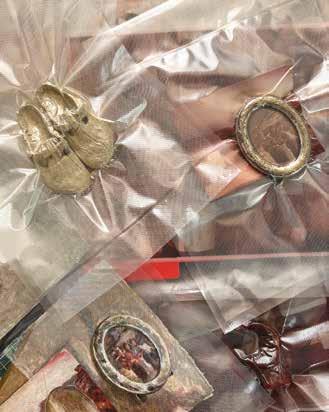

The exhibition includes work by Elise Billiard Pisani, Balthazar Blumberg, Josephine Burden, Anna Calleja, Céline Cuvelier, Katel Delia, Claire Ducène, Axel Fourmont, Bettina Hutschek, Margerita Pulè, Stéphanie Roland, Matthew Schembri, and Raffaella Zammit.
“Throughout this process, the idea was never to simply show artworks,” adds Ducène. “It was to collectively build a space – conceptual and physical – where each artist’s practice could interact with others, forming new islands of thought and imagination,” she concludes.
The collective multidisciplinary exhibition Two Moons and Two Suns by Fictive Archive Investigations is supported by Arts Council Malta & Wallonie-Bruxelles. The symposium is supported by the Ministry for Finance. It runs from 3 July to 20 August at the Malta Society of Arts, Palazzo de La Salle, Valletta. Entrance is free. For more details and opening hours visit www.artsmalta.org/twomoons-two-suns-exhibition or www. facebook.com/maltasocietyofarts.
July - October 2025
The Malta Society of Arts’ Performing Arts Programme Sustain-Delay kicks off its summer events by welcoming artists Container and Huerco S. for their Malta debut.
Sustain-Delay, the Malta Society of Arts’ Performing Arts Programme, welcomes another season of adventurous music, launching on 5 July 2025. Sustain-Delay is known for pushing the boundaries of Malta’s listening audiences, while allowing people to slowly dip their toes into genres less commonly explored in in the island’s sonic landscape. Taking place at Hideout in Pembroke (right next to the BMX warehouse), the two events will combine local staples with veterans of noise and ambient.
Starting with Total Scuzz on 5 July, the first of Sustain-Delay’s two-part summer season opens with Maltese artist Volph, a producer and DJ who has been navigating the local electronic scene for over 20 years. Among his many laurels, Volph has been featured in the lineups of both GLITCH Festival and Earth Garden, and has published releases on Wirebox Records and Bass Agenda Recordings.
Volph will be followed by a set by Alien Montesin, whose distinctly Maltese yet out-of-this-world style has taken Malta’s party scene by storm through her distinct hypnotic beats.
From Alien Montesin’s intergalactic adventures through electronic music, we move onto the headliner Container, an artist from Ohio who has been a staple on the underground music scene for decades. Known for his abrasive,
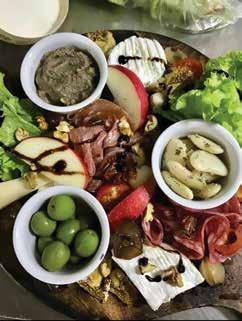

rhythmic music that blends DIY techno, stripped-down electro, noise and funk with a punk ethos, Container is known for his high-energy live sets – tight, intense, yet always danceable.
As the heat continues to rise on the Maltese Islands, Sustain-Delay will bring in the breeze with A Resonant Forever on 2 August.
The second and final event of the summer is headlined by Huerco S., based in Brooklyn (New York), who brings a calm ambient energy that gradually melds into smooth, inventive beats. A pioneer in a genre of his own
making, Huerco S.’ album For Those of You Who Have Never was lauded by Pitchfork Magazine as one of their top 50 albums of all time.
Two locals will support Huerco S. Starting with Giaçinté, part of the duo behind the highly acclaimed MAGMA underground events, he will present a hybrid DJ-live set – a dynamic amalgamation of live electronic music and carefully curated tracks, resulting in the fluid and engaging musical narrative he is known for.
The second opener, Son Of, is a Rotterdam-based Maltese artist known for crafting intricate compositions that blend experimental textures with strong rhythmic elements, and for creating immersive auditory experiences. This night promises to be a seamless fusion of ambient atmospheres and poised, engrossing beats. It also reflects the broader spirit of Sustain-Delay – a platform that continuously opens new sonic experiences to local audiences while welcoming international artists into the fold.
“At the Malta Society of Arts, we believe in supporting bold, forwardthinking programming that invites audiences to listen differently,” says MSA President Adrian Mamo. “SustainDelay exemplifies our commitment to fostering artistic risk, innovation, and meaningful cultural encounters.”
Sustain-Delay 2025 is produced by the Malta Society of Arts and Artistic Director Kurt Buttigieg, in collaboration with Arts Council Malta and is sponsored by Rock’N Malta (Festivals Malta). For more details about the MSA, please visit www. artsmalta.org or www.facebook.com/ maltasocietyofarts.


ens:
WSilence by Rebecca
is a solo exhibition presented at Valletta Contemporary from 19th September to 17th October. This deeply personal and introspective collection invites viewers into the artist’s quiet world, one shaped by place, gratitude, and the poetry of the everyday. Through a series of tender and evocative works, Bonaci captures the beauty found in life’s unspoken moments: a glance, a pause, a space filled not with words, but with presence. In Wens, silence is not emptiness but rather a space of connection, memory, and belonging. The exhibition speaks to the comfort we find in the familiar and the meaningful weight of small, daily rituals offering a moment of stillness in a fast-moving world.
Valletta Contemporary, 15, 16 & 17 East Street, Valletta.
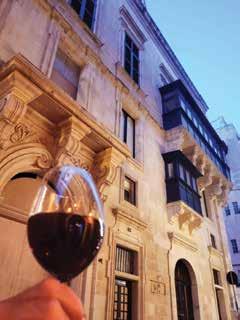

News / Exhibition / Malta
July - October 2025
MALTA
In the absence of justice, why should anything that remains be reduced to a conduit for prolonged grief? How does it transcend from memorial to monument? What emerges if we don’t allow the dust to settle? Is there not a power that lies in a story’s open end? The dual meaning of “tabling” suggests both the physical act of presenting emotions through artefacts and the metaphorical act of addressing di cult truths unresolved and unspoken; universally political but familiarly personal.
If at the heart of justice, there lie people, then at the heart of injustice, there lies neglect; an absence of care, a disregard for human dignity, an erasure of individual stories. Injustice thrives in spaces where empathy is absent, where power ignores those who su er, and systems designed to protect, instead prevent. At its core, injustice is not just the failure to act, but a deliberate denial of voice, an erasure of histories, and a perpetuation of silence where there should be accountability.
But then the sound we have come to associate with “emotion” suggests an intimate caress; a quiet, soft echo, a forceful undercurrent that persists through time. It is not a loud, transient cry, but a lingering murmur that inches at the cusp of something else. It implies an expectation and embeds a power in whoever utters it, even if under their breath.
Tabling Emotion is a popup, activist art installation and exhibition designed to shed light on seven cases in Malta where justice has not been served,
leaving families with unresolved grief and open-ended stories. The installation aims to evoke empathy and reflection by presenting a table display of carefully curated artefacts that symbolise the personal and intimate memories of the victims. Exhibited alongside the curatorial installation, artworks by artists with practices engaged in civil justice and protest will continue to amplify the project’s aim. The call for action here is to bear witness to victims and their families, keep the plight for justice going and insist on greater legal and political action.
The work of Adrian Abela, Joanna Demarco, Gulja Holland, Bettina Hutschek, Marlon Tabone, Sebastian Tanti Burlo and Sonia Lenzi will compound on the urgency of the curatorial installation. Across diverse media and considering separate themes/ events, their work will help frame the role of the artist within the larger conversation on civil justice, activism and protest. By humanising stories and experiences, Tabling Emotion seeks to inspire dialogue, empathy, and serve as a call for justice as part of the greater mission of both the Public Interest Litigation Network and The Daphne Caruana Galizia Foundation.
Tabling Emotion is an initiative by the Public Interest Litigation Network and The Daphne Caruana Galizia Foundation in Malta, in collaboration with R Gallery and curated by Andrew Borg Wirth.
24.07.2025 - 25.08.2025 | Tabling Emotion | R Gallery, Tigne Street 26, Sliema, Malta

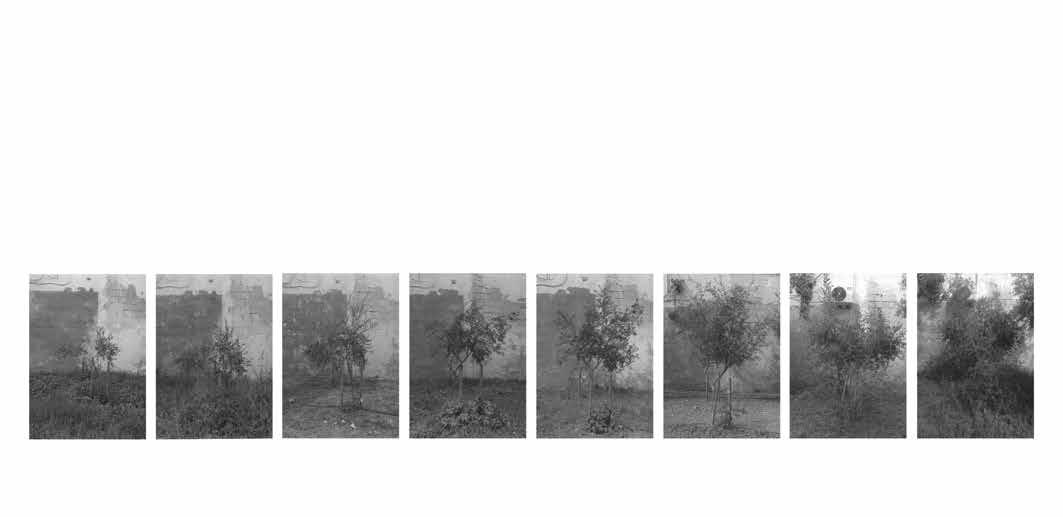

/ Press Release / MICAS
July - October 2025
MALTA
Malta International Contemporary Art Space (MICAS) has opened its second exhibition, The Space We Inhabit, featuring work by Caesar Attard,Vince Briffa, Austin Camilleri, Joyce Camilleri, Anton Grech and Pierre Portelli, with paintings, sculpture, video and sound-based work.
Minister for National Heritage and the Arts Owen Bonnici announced the exhibition together with MICAS Artistic Director, Edith Devaney.
“This exhibition marks a significant milestone for Maltese contemporary art. Our artists’ oeuvre is itself at an international level, and our country has always nurtured the dream of having such a space as MICAS to exhibit both international and Maltese work – it was a challenge to deliver this project but also to combine this ambition of attracting international artists to Malta while giving our artists an international platform. I am delighted that MICAS is committed to celebrating Maltese art in its highest form and bringing it to a wider international stage,” said Bonnici.
MICAS Artistic Director Edith Devaney said the six artists featured in The Space We Inhabit all have established far-reaching reputations.
“Malta has been home to a thriving arts and culture scene for many decades, with its modern development gaining momentum after independence in 1964. Evolving towards modernism, Maltese artists have frequently trained in European centres, engaging with global

themes while maintaining connections to the island’s unique cultural heritage. And for many, this has led to recognition and opportunities well beyond Malta.”
Arranged around the theme of space – both real and imagined – each of the six artists in The Space We Inhabit responds in different ways, with some

evoking a sense of a landscape while others taking a more conceptual view on the idea of space, and by extension, place. The exhibition takes place across all three main exhibition floors of the museum, with the works creating a visual discourse that explore the concept and reality of the space that each of us perceives and inhabits.

“It is always a cause for celebration here at MICAS to put Maltese artists of excellence at the forefront,” said MICAS executive chairperson Phyllis Muscat. “All artists will be represented by numerous works, many of which have been produced and adapted specifically for this exhibition. We are honoured that these leading contemporary artists have taken up this challenge, and we encourage the Maltese public to enjoy this national space and cast their eyes on the best Maltese contemporary art has to offer.”
The Space We Inhabit runs until 28 September. Opening hours are Tuesday, Wednesday, Thursday & Sunday: 10am to 6pm; Friday & Saturday: 10am to 8pm.
www.micas.art
Follow MICAS on Instagram: @micasmalta
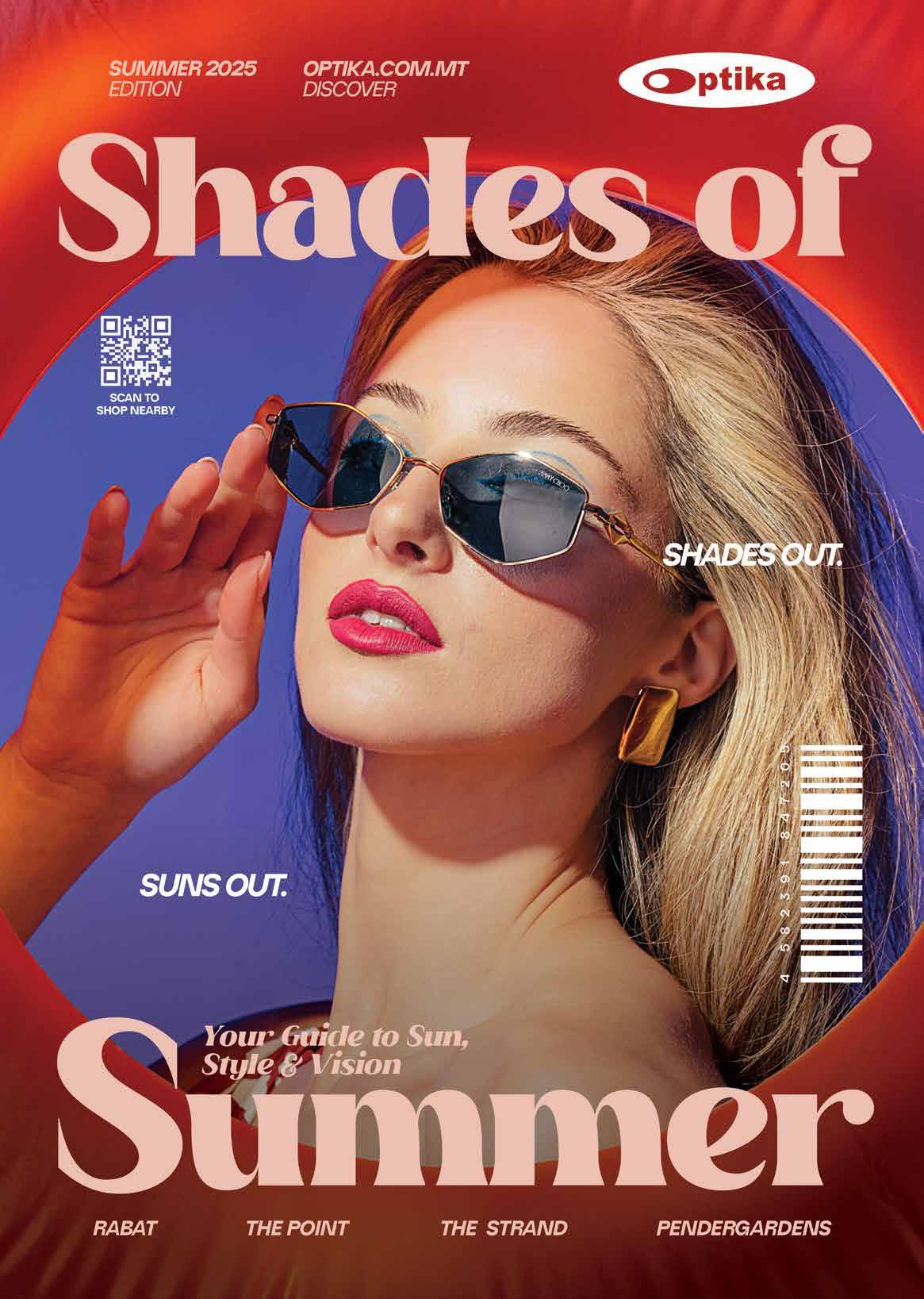
News / Press Release / Edwards Lowell
July - October 2025
Edwards Lowell is celebrating 100 years of timeless luxury across three generations, marking the vision and dedication of the family business in the realm of quality watches and jewellery.
From its beginnings in other ventures in Valletta to representing iconic international watch brands like Rolex and Patek Philippe, the company is looking back at its journey of growth in the luxury goods business and ahead to an equally bright future as the thirdgeneration steps in.
Over the past century, Edwards Lowell Co. Ltd has built a fine reputation, based on the values of “quality, style and attention to detail.”
Speaking about the significance of the milestone anniversary, Malcolm Lowell Snr, who was instrumental in introducing luxury watches in the 1970s, said “100 years is a long time for any company, especially a small business in a small and very competitive market.”
He expressed his satisfaction at having gone “from strength to strength, while at the same time achieving and retaining full family ownership.
As regards the highlights and key turning points throughout the last century, Lowell Snr credited his

wife Isabelle for her “great help” in managing to completely turn around the activities of the business from wholesale foodstuffs and clothing – “beset with enormous problems of government-imposed import substitution and import license restrictions” – towards quality watches and jewellery, which “we have always loved.”
The emphasis has always been on full control of retail boutiques in the most prominent positions, Lowell Snr continued about the winning strategy.
“After all those years, it was with great pride for both Isabelle and myself to see our children Annabelle and Malcolm take a very strong interest in our business.

“They have now taken over the general day-to-day running with great success, providing the key to the future, while allowing us to relax and take a back seat in full confidence.”
As to how the scenario has developed over the years, Edwards Lowell managing director Malcolm R Lowell said the luxury goods business has changed dramatically since the dawn of social media, turning the top brands into megabrands and relatively niche brands into highly coveted and wellknown icons.
The auctions business also had an impact on this, and there is no indication of things slowing down in the coming years, he continued.

“We were in the fortunate position to be able to invest and build on our past. At the right moment, the family did exactly that. It was not apparent at the time, but in hindsight, it was very much about taking advantage of the opportunities at the apt time,” Lowell said.
The company will now be honouring this achievement – 100 years of “quality, detail, luxury, experience, heritage, style, dedication, family and hard work” – with special celebrations throughout the year and surprises in store.

1955 Advert

July - October 2025 Review / Exhibition / Malta
LISA GWEN
Saint or sinner?
The implications of these words seem to dictate an either/or ‘situation’. In the sense that one could ‘claim’ either title, but not both. And yet, humanity proves otherwise. Time and again.
Every saint is also a sinner. Fact. But can we speculate, or even claim that ever sinner has performed a saintly deed? Hardly.
People sin on a daily basis (by sinning I am taking the literal sense of committing an immoral act which is considered a transgression against divine law). So
much so, that humans feel a compelling need to confess their sins – to parents, friends, a significant other, religious practitioner; even to their therapist.
- I had an impure thought: Sin. I disrespected my parents: Sin. I pleasured myself: Sin. I lied to get out of working extra hours: Sin. And that’s just today. You get my drift.
- I helped an old woman cross the road: Good deed. I helped a woman juggle her shopping bags: Good deed. I fed the stray cats in my neighbourhood: Good deed. Also, just today – by no means saintly, however.
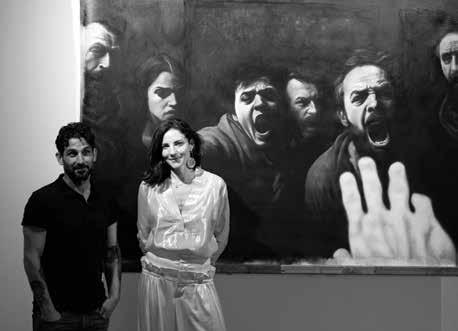

Becoming a saint, involves a laborious process that one can only ever hope to attain the title post-mortem. It is characterised by a life of virtue, by serving God, possibly also the performing of miracles. Not exactly attainable goals for the average Joe.
The elaborate introduction is a necessary preamble to the exhibition titled: Every saint has a past and every sinner has a future. Ever since interviewing CO-MA regarding his solo show currently running in Valletta, I have been incessantly attempting to resolve the two-face conundrum. Extrapolated from Oscar Wilde’s A Woman of No Importance – in its entirety, the quote reads: “The only difference between the saint and the sinner is that every saint has a past and every sinner has a future.” Superficially, Wilde seems to point towards temporality as the main marker distinguishing the two states
of ‘being’. Saints are made. Sinners, merely, are.
Nevertheless, it is sin that points to our humanity. To our existence. And this is what we are often painfully reminded of through CO-MA’s Seven Deadly Sin representations and reinterpretations – of the reality and the proximity of sin to our everyday lives. Sloth can look as plain and beautiful as a fair maiden resting upon a feathered surface, or that Lust need not be depicted as an orgy of bodies; rather, it can be accentuated through the touch of a powerful man preying on an innocent child.
Exploring the galleries of Spazju Kreattiv and soaking in CO-MA’s work has a strange effect. The artist successfully makes the viewer ponder our personal attributions to each of the seven sins; how would we represent our topic of scrutiny? What visuals, what
LISA GWEN holds a first degree in History of Art and a Masters in Cultural Heritage Management. She is a freelance curator and writer for art and design events.


qualities do we associate with each, and how would they become manifest in tangible form? This element alone, inducing a highly unexpected outcome, of a most personal if not intimate nature. This mood is decidedly exacerbated by the infused mood throughout the galleries. The lights are dim. The sense of drama, elevated. And then there is the sound, the music. Almost undetectable. Just like the background score of a movie, which complements and heightens the visuals. Composed by the artist himself, the aural component is divided into four parts, which merge and blur seamlessly into one another as you move from one gallery to the next, adding delicate flavour and nuance to the rich earthy tones of the paintings.
In a world steadfastly losing its sense of colour and nuance, CO-MA seems to have found it.
He uses, blends and melds the teachings of the Old Masters; adopting and adapting the sfumato, chiaroscuro and luce di cantina techniques to suit his needs and his whims.

When I had first met CO-MA back in 2021, he had confessed to a strict penchant for Black and White – clarity, no unnecessary distractions, just plays of light and shadow. So much so, that his original medium of choice was charcoal.
However, back then I could foresee that this imposed restriction would be a mere garment to disrobe, when the time was ripe and fitting. From dust to oil. CO-MA has made a seamless transition;
and this body of work constitutes almost the entire oeuvre produced ever since dispelling with one medium for another.
This shift in medium has gifted him with possibility. No longer is his technique dictated by elimination, through cautious blurring or carefully construed highlights. Now, more than ever, his method is one of layers: The most shallow of builds an architect could ever endeavour to create. A build possessing
the most faint and delicate of structures, yet one which sustains an intricate fabric shrouded in dogma, history, context, symbolism and allegory.
CO-MA’s palette still appears predominantly monochromatic. Yet, amidst his propensity for umbers, ochres and tenebrous tones, one can detect a panoply of colour. Blues, greens even some reds and a rosy pink can be viewed in the flushed cheek of an

Within an environment obsessed with fads, trends and expectation... CO-MA is slowly and quietly redefining the local landscape of painting.
asphyxiated Envy. Oil is a malleable medium, which can be controlled and muted, diluted or impasted. When employed in CO-MA’s manner, it allows for a rich, glimmering quality, which can be quasi sigh-inducing.
His evolving aesthetic can perhaps be described as Postmodern or Contemporary realism. His orchestrations amalgamate Italian Renaissance idealism, Northern realism and Baroque drama, which has been further interspersed with outsider and graffiti art. He uses, blends and melds the teachings of the Old Masters; adopting and adapting the sfumato, chiaroscuro and luce di cantina techniques to suit his needs and his whims.
Seven paintings produced in four months. In tandem. Thereby ensuring an absolute homogeneity across each of the works presented. CO-MA clearly enjoys a challenge. Imposed as it may be.
The apparent vandalism of his own painstakingly painted tableaus, an added act of rebellion that further rejects artistic archetypes. This is a release; a contradiction of, and in juxtaposition to classical conformity. Within an environment obsessed with fads, trends and expectation... CO-MA is slowly and quietly redefining the local landscape of painting.




July - October 2025
MARIA MUSCAT writes exclusively about things she likes. She has worked in and around the book industry for years; in roles that bring together content writing, editing, project management and event coordination. She also makes things, she sews, she cooks and she always asks a lot of questions.


Contemporary art collector and local patron DR. JOANNA DELIA lives passionately. We sit across from each other in her home cum gallery - or is it the other way round? - to chat about her world and her art. We are literally surrounded by it, sitting on it. No podiums, no screens, art is within arm’s reach in every room. It becomes apparent very quickly that there is a bigger love pushing Joanna’s drive to collect - a love for the story behind things.
July - October 2025
“Being present, curious, encouraging and supportive from the outset when the odds are against every young artist, that is a role I am very happy to keep up.”
Which is the most memorable piece of art you have ever acquired?
There are so many; but I would say Matthew Attard’s Biennale di Venezia 2024 piece. Everything involved in me getting to that artwork is memorable. From my first chance meeting with Matthew at a house party in Venice, the long conversations throughout his artistic career since then, the many pieces by him which I fell in love with and added to my collection, and finally the magic opportunity of owning this very piece. From start to finish, my relationship with Matthew’s work is replete with memorable stories.
Have you ever had a piece that changed your perspective or feelings about art?
To some extent I guess every piece I own has moved me to challenge or question or feel something new, but in 2016 I purchased a digital photo triptych titled ‘Skin of Milk’ by Javier Joseph Formosa. This was his MCAST dissertation project - a very political work about gender which I believe was very ahead of its time. It hangs in my living room to this day and is an important reminder that art, for me, is a powerful entry point to questions I have about life. The art I am attracted to always says something about me and what I need to explore. After this, I found myself gravitating more and more towards gender identity art.
“Owning art is an honour. To have a work that comes from the soul of an artist is a privilege. Art is a language - every artist is speaking
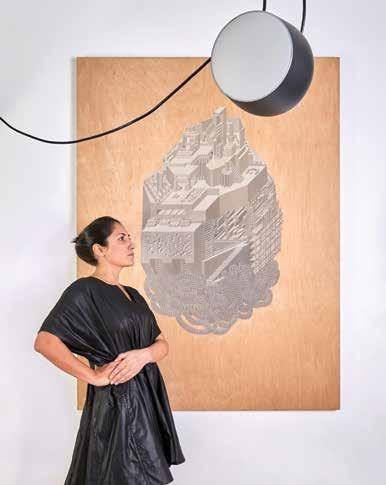
a different one – and to be let into that world and that language is a special thing indeed.”
What do you feel is your role in supporting the local arts scene? It gives me so much joy to have been there since the very beginning for many contemporary Maltese or Malta-based artists – either buying their first works or creating the perfect conditions for people to come together to discuss and share and support art and artists. My home is open to all art lovers for this very purpose. In conjunction with this I feel a sense of duty to spread the word about the impressive quality, level and diversity in the local contemporary art scene. Artists here, in comparison with those abroad, have flourished under duress and I will always favour investing in the local scene over bigger foreign names. It genuinely hurts to see so many great local artists who lack recognition, whose work is not yet understood. It goes beyond exclusivity and having first dibs. Being present, curious, encouraging and supportive from the outset when the odds are against every young artist, that is a role I am very happy to keep up.
“A house without art is a dead house”
How did you first become interested in art collecting? Was there anyone or anything which set you on this path? My youth was spent surrounded by art in churches because of my uncle,



by Lisa

and some of my friends’ parents were collectors. But my deeper understanding of what art collecting is, was inspired by my sister Romina’s academic journey. The smallest of details from her researching an art collection of a knight would spark the deepest of conversations about society, politics, history. It became apparent to me that art collecting is testament, it is history, it is storytelling! Art traces life and consolidates an image of the present for the future. With my first salery I bought a piece by Andrew Diacono – a portrait of a woman with her hair up in a bun which reminded me of myself and which I have carried with me from one house
to the next. From then on, art collecting became a compulsion, as well as going to exhibitions – it’s a dangerous love affair!
Art collecting is testament, it is history, it is storytelling!
How did you and Lily Agius meet, and what do you specifically like about her curation?
We go way back! Lily and my sister sat for the same course at Uni. I remember when she started thinking of opening the gallery – which was pretty much the only contemporary art gallery at the time - after years of exhibiting the work of international artists in various venues
and as an editor of a popular magazine at a local publishing company promoting artists… I love observing Lily’s process and progress.
Lily has kept a very consistently high standard over the years. It is very easy for gallerists to start pushing artists they represent to go commercial and produce work that is easily sellable. She never went there and continues to dedicate time to genuinely identify and support committed artists, striking a good balance between covetable and buyable works – quite the feat in contemporary art curation given how challenging digital and multimedia
art can be in supporting a gallery. Her gallery, quite simply, sets an example.
We collaborate when possible, with an exchange of artists and contacts, and in widening the circle of art makers, appreciators and collectors locally via her gallery. I have also been present since the launch of Artpaper with Lily encouraging me to write about various topics in the arts which I am passionate about and involved in.
What is the most memorable piece you have ever acquired from her gallery?
I would have to go for a Torso by the
July - October 2025

Malta-based French artist Julien Vinet – an artist I have a lot of work by. Lily represented him from the start with his first solo exhibition of figurative drawings before she opened her gallery. I love his work and am always very happy to be part of his life. I think Lily has done an excellent job representing him.
Which local artists Lily has represented do you wish people knew more about?
Seriously, all of them. From the ones she represented in the past I would say John Paul Azzopardi. I am a big fan of his evolution as an artist, his meditative practice, his visions translated in bone. I really hope he receives more international recognition for his work. Stephanie Galea, on the other hand, has one of the best photographic eyes I have ever come across. I find it hard to separate her work in fashion photography from her more artistic work. There is a softness to her gaze that is so alien to impersonal fashion shoots and remains palpably inspired by the country she grew up in, exploring fresh and interesting angles to it in every work. I am also looking forward to more art by CO-MA who is

Photo by Lisa Attard
injecting more emotion in his work and putting his technical prowess at the service of more conceptual ideas. I have seen the switch in his work now – I am interested.
“Owning art - knowing that this piece has never been made before or will ever be made again - a piece that crystallises a time, a feeling, a thought or all of the above - a piece that will keep changing and giving - it is timeless - it is, essentially, infinity.”
Can you describe the sensation of being attracted to an artwork you just know you need to home? Walk me through your typical process when acquiring a new piece?
It is emotional for me - I just want to live with it! I cannot say that I have any specific criteria with which I choose art. The sensation is simply a feeling of “I just cannot NOT have it”. With time I have become more and more aware of the fact that the act of acquiring art is part of the art piece’s own story. Pieces I have collected over the years bounce off each other even though they were never intended to. I never purchase with the ‘that would look great there’ or ‘that matches these’ mentality. Pieces in an honest collection click because they consolidate the collector’s vision and values. The common thread in an art collection is implicit and it always connects back to the collector’s intent.
“At the end of the day, when you look back in time, the only thing that remains is art. We forget the political nuances - in fact, we remember those through the art, the architecture, the music. Art narrates history.”
Does your scientific background inform or inspire your choices vis-a-vis the art you choose to surround yourself with?
Einstein, a favourite of my dad’s, championed curiosity, imagination and creativity in science. These were my foundations in life. Upon these three pillars, also rests every artistic practice. I see very little difference between science and art, except, I would say, the artist uses these same foundations to go beyond discovering what is intrinsically coded into the universe. Artists use curiosity, imagination and creativity to explain, to better and to inspire our experience of the universe. Science has much to learn from art I feel.
“The only thing I’m proud to be human for, is the ability to create art”
What advice would you give to someone just starting to collect art?
‘Follow your heart’ will always be my best advice. Get interested in the story and ask the right questions to get you there. ‘What does this work mean?’ will not get you to the core of the story. ‘What made you go to the studio to work?’ has a better chance of opening up a conversation, of getting you closer to the story behind the work and the artist. Allow yourself to fall in love with the work and understand that you are yet another element in the story of the piece and its maker. In this respect, my children, who have grown up surrounded by contemporary art, are testament to how powerful art is. The questions they ask me and the artists about the work always go beyond the technical and the apparent. They discuss and they challenge. There is a lesson in that.
#ARTCOLLECTORSERIES @lilyagiusgallery
“… the act of acquiring art is part of the art piece’s own story.”

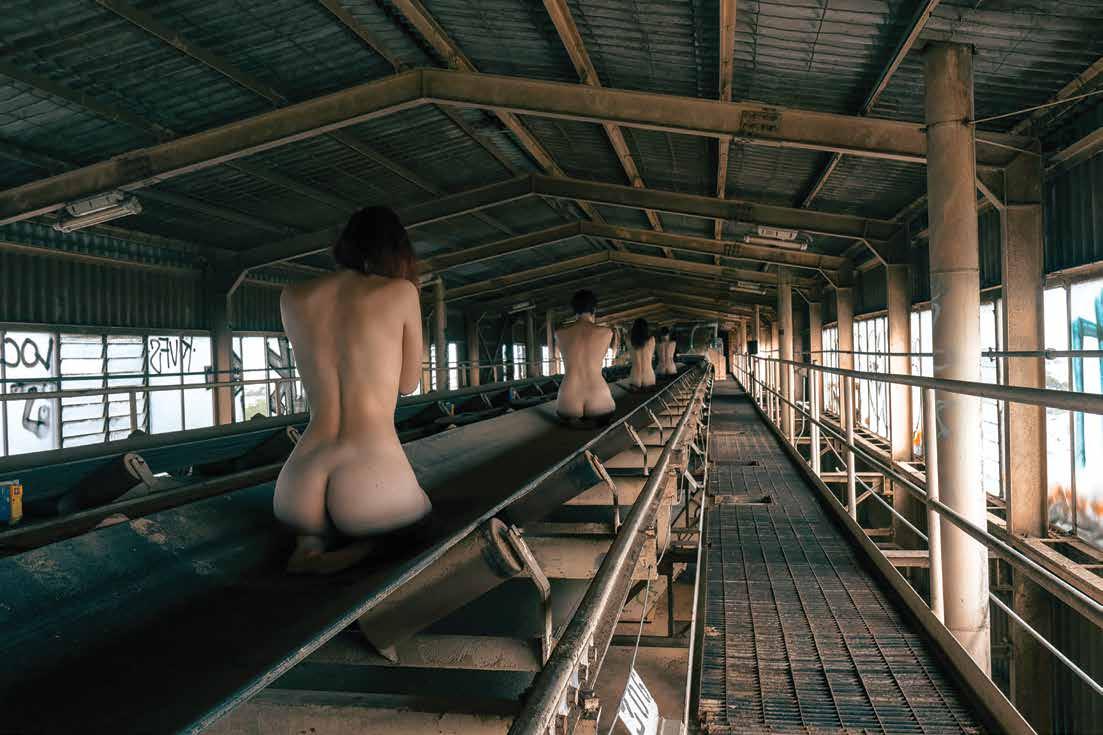
Review / Venice Architecture Biennale 2025
July - October 2025
VENICE
ERICA GIUSTA
‘Che cosa voleva venderti quell’ingegnere? (what was he trying to sell, that engineer?)’, an Italian friend asks with a grin, as we soldier on, from one exhibit to the next, at the opening of the main exhibition in the Arsenale of the Biennale, striving to make sense of the sheer amount of installations and projects showcasing alternative building materials and experimental technologies, enthusiastically presented by professionals whose job titles alone would require a caption.
With over 750 participants, the 19th edition of one of the most anticipated
events in the architecture world feels like an over-crowded display of overengineered products, ranging from 3D printed bacteria to space suits and robots, conveying a chilling sense of techno-optimism and leaving most visitors confused and exhausted. In this context, meaningful projects such as 10,000 hours of care by Lina Ghotmeh and Stonelife The Microbeplanetary Architecture of Lithoecosystems by Andrés Jaque / Office for Political Innovation and Gokce Ustunisik, together with a myriad of other projects by smaller firms and academics, remain overlooked - and their potential for a compelling contribution unexplored.
Throughout the four main sections of the exhibition, ‘Transdisciplinarity’, ‘Living Lab’, ‘Space For Ideas’, and ‘Circularity Protocol’, the key themes tackled are relevant and remarkably multifaceted, but in most cases their layers of complexity are articulated in scientific terms only. The main curator, Italian architect and director of the Senseable Cities Lab at MIT Carlo Ratti, recently said that he “deliberately packed the exhibition full to create a Petri dish for generating ideas. What you’ll find in Venice this year is not a static showcase, but a call to action – a laboratory of experiment. A living super-organism built from unexpected collisions, a chain


reaction sparked by minds from diverse disciplines and powered by many forms of intelligence – natural, artificial, and collective.”
In this chaotic laboratory, stararchitects and names belonging to what many considered an outdated chapter of contemporary culture, find ample space to contribute to the catalogue of solutions enabling us
ERICA GIUSTA is Director of Innovation at architecture firm AP Valletta. She read for an MA in Architecture, and has a Post-Graduate Master from the Sole24Ore Business School in Milan. She contributes regularly to academic journals and international architecture magazines such as A10 New European Architecture and Il Giornale dell’Architettura.


“to adapt to a changing climate into a changing planet”, as declared by Ratti. When contemplating ‘Gateway to Venice’s Waterway’, the attentionseeking installation by the Norman Foster Foundation in collaboration with Porsche on the edge of the laguna, one cannot help but wonder what problems these solutions are actually tackling, and what adaptation model is being suggested. How is a pretentious
pavilion made of diamond-shaped aluminium panels stimulating a debate on future mobility and sustainable design? Similarly, how is ‘Canal Café’, the Golden Lion-awarded installation by Diller+Rendro+Scofidio, purifying canal water in order to make coffees, a genuine and applicable solution for communities battling water scarcity? And why are all projects’ texts presenting the most unnecessary AI-generated summary? In
conclusion, how are we to ‘learn from natural intelligence’ and ‘generate ideas to sustainably adapt’ through an array of an exploitative proposals relying on energy-intensive technologies and aggressive extractive models? The questions abound.
On the other hand, in the Giardini, the Biennale venue hosting most national pavilions, a number of participations
display curatorial clarity and greater sensitivity to aspects of the themes proposed by Ratti, providing some much-needed respite.
The Serbian pavilion, ‘Unraveling: New Spaces’, curated by architect Slobodan Jovic and designed by an interdisciplinary team composed of Davor Ereš, Jelena Mitrovic, Igor Pantic, Sonja Krstic, Ivana Najdanovic, and Petar
Review / Venice Architecture Biennale 2025
July - October 2025
Lauševic, poetically employs principles of circular design by showcasing a woven wool fabric installation that peacefully unknits itself, combining Serbian textile tradition with key questions about the impermanent and adaptable nature of contemporary architecture. In a different but somehow kindred spirit, the Nordic countries pavilion questions modernist notions still defining contemporary architecture and regarded as dogmatic. As written by main artist Teo Ala-Ruona in his statement, ‘when you practice a performance long enough, it’s easy to forget that edits can be made’. Successfully combining architecture and performance, ‘Industry Muscle: Five Scores for Architecture’ explores the built environment, and the spatial qualities of the Nordic pavilion in particular, considered as a masterpiece of Modernist architecture, through the lens of trans embodiment. If ‘architecture is designed for the human body, and our understanding of the body shapes architecture’, how are we to evaluate and evolve from Le Corbusier’s Modulor Man that standardised and regulated (and still does) our worldview? The five performative exercises proposed by Teo Ala-Ruona, including Maltese artist Romeo Roxman Gatt, place the audience in front of the most urgent
and brutally honest of questions: how relevant are modernist ideals of endless and standardised growth, in the current era of ecological crisis? And most importantly, how can we move past them?
The Golden Lion-awarded pavilion of Bahrain, ‘Heatwave’, also revolves around key questions aiming at redefining public space in the current era of ecological crisis, speculating on some of its most relevant social and urban aspects. Curated by architect Andrea Faraguna, the site-specific installation proposes passive cooling strategies inspired by Bahrain’s climatic conditions and cultural heritage, which the Biennale international jury defined as ‘viable proposals for extreme heat conditions’. Adaptive and communal in spirit, this pavilion provides an excellent example of how the pragmatic and scientific nature of the profession can positively mix with an artistically layered understanding of space, generating an enticing and calm atmosphere in which we found that much-needed respite from the chaos of the opening, and where we were reminded of what the role of the architect is (or should be): not a scientist, but rather an alchemist.

